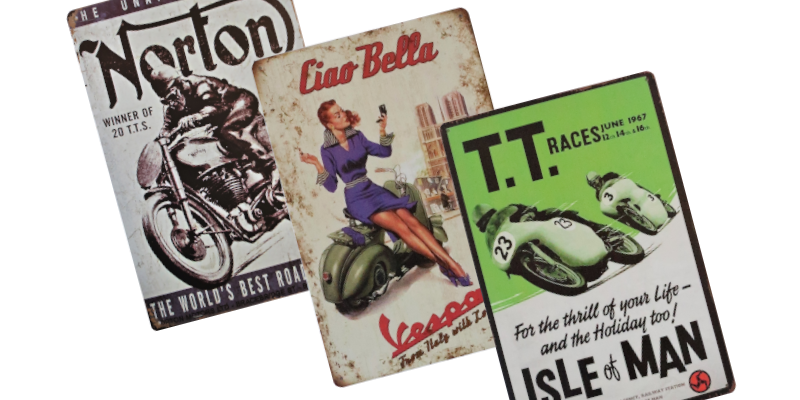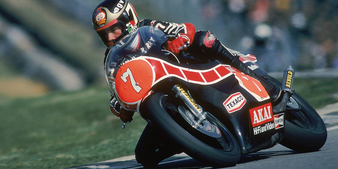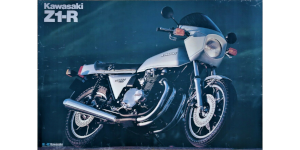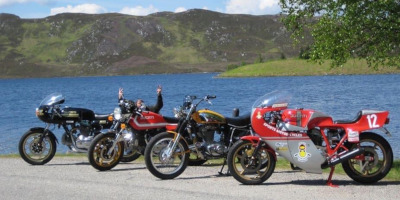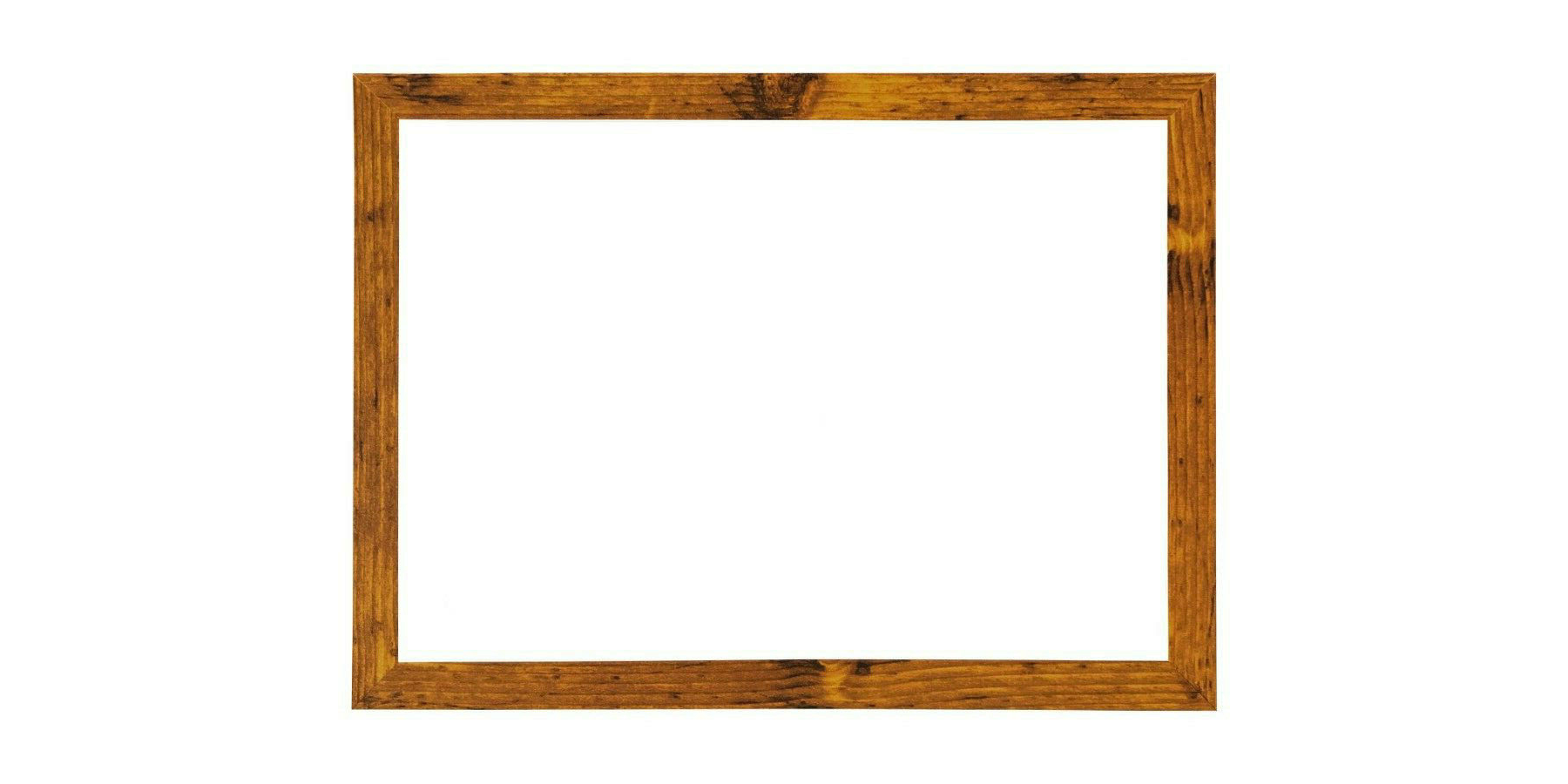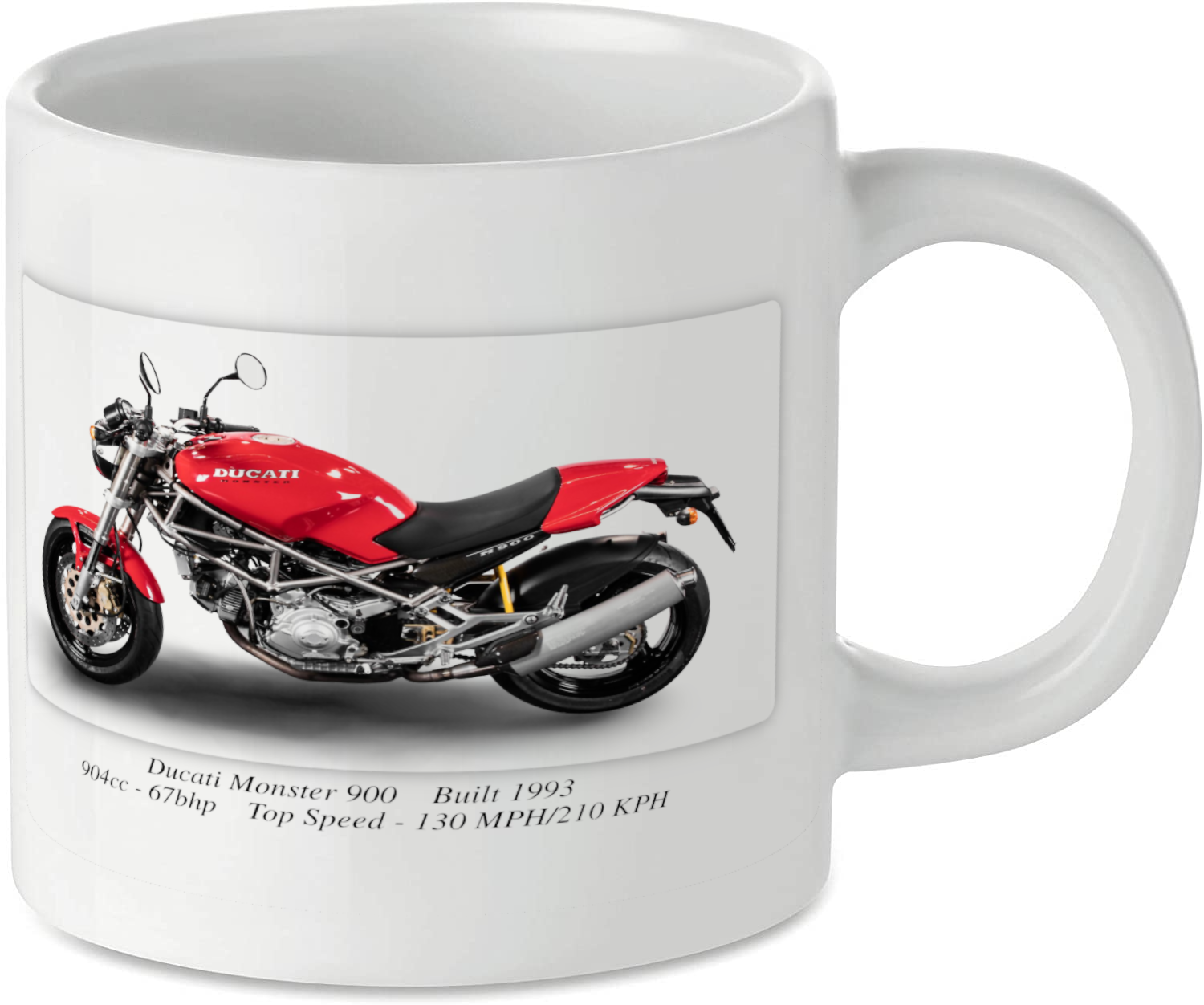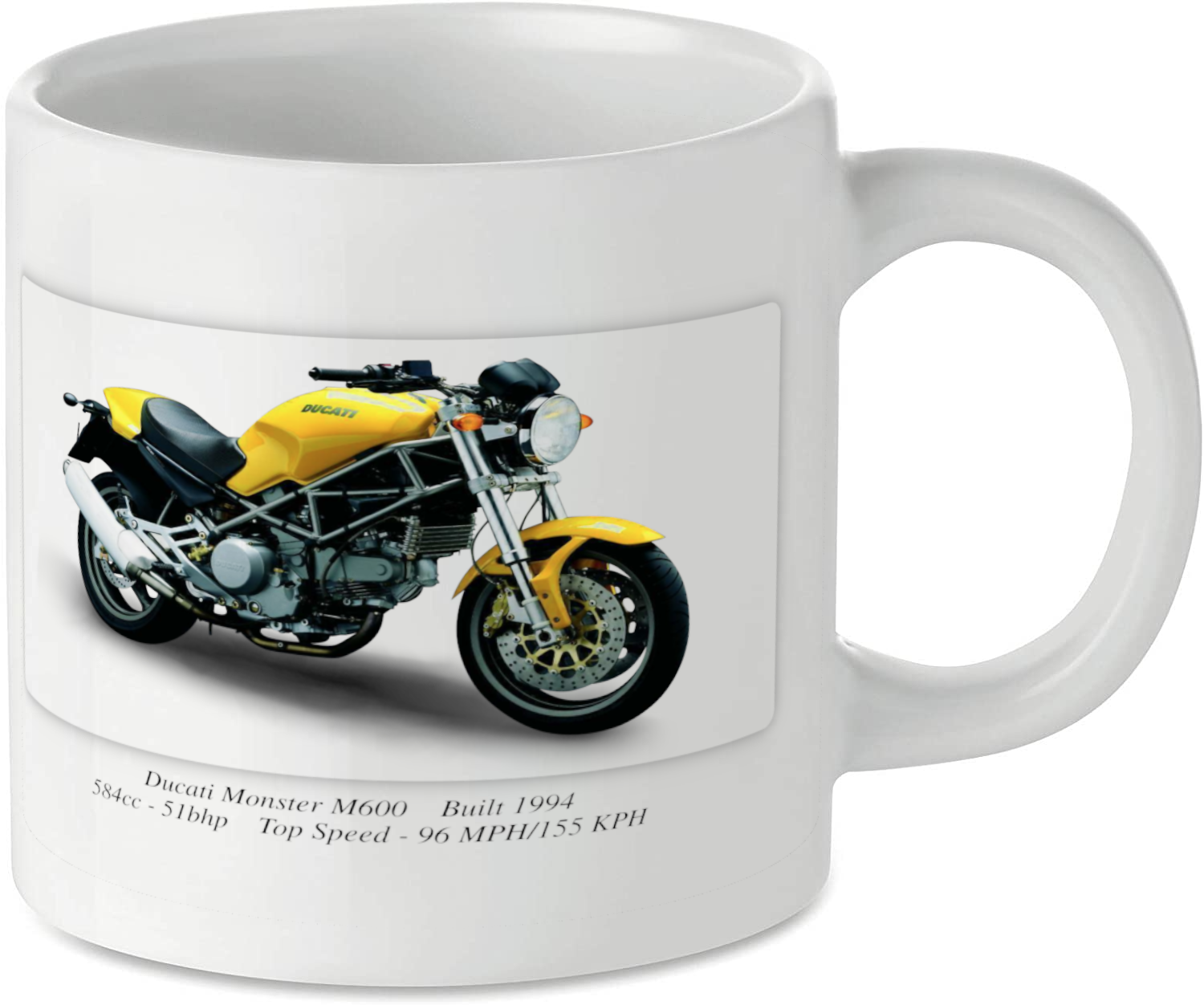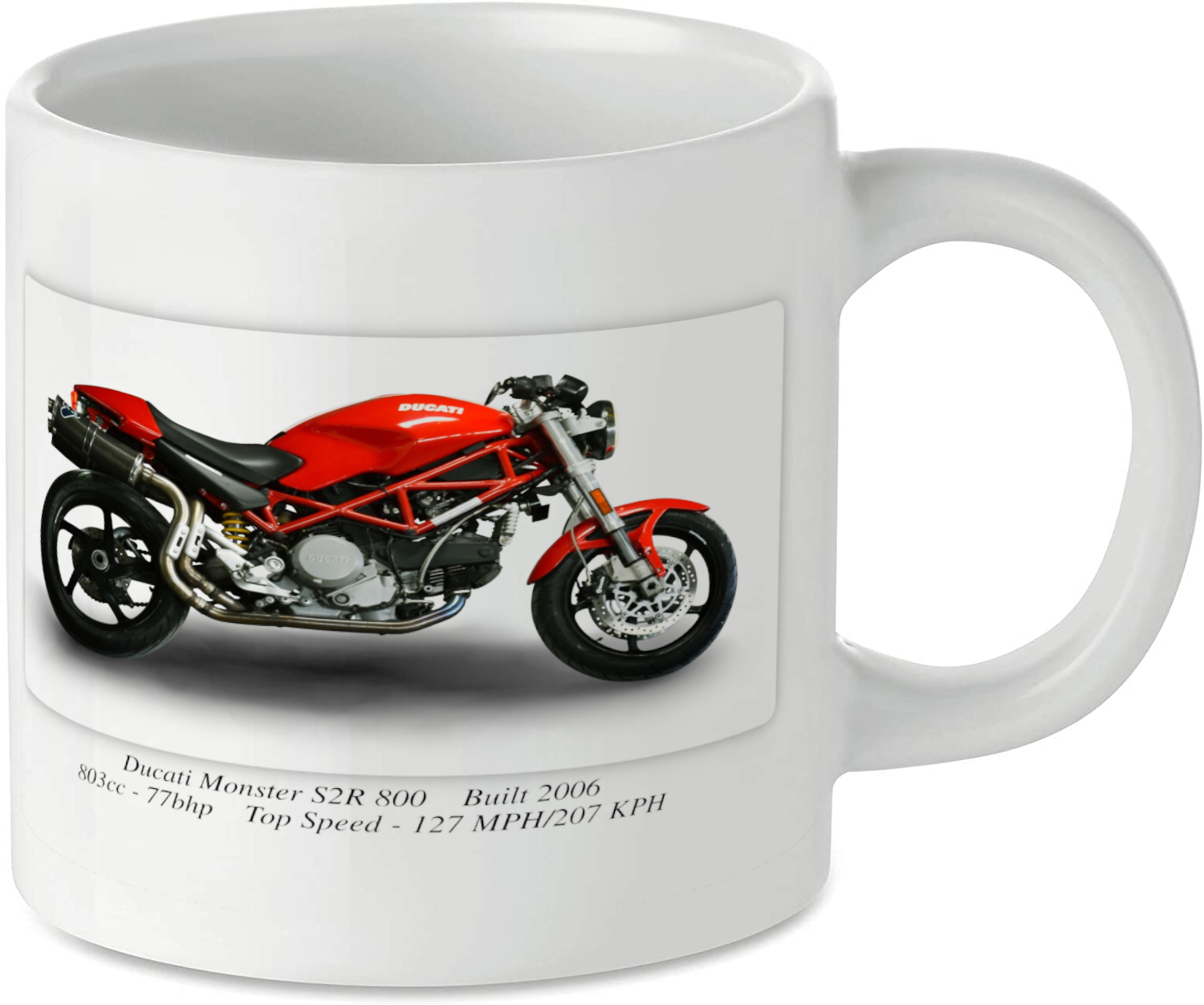History of the Ducati Monster
The Ducati Monster is seen as the bike that allowed Ducati to survive a financially difficult period in the 1990s where was a very significant possibility the company would have gone bust. It could so easily have never happened because as well as being intended to be a Cagiva model, Ducati’s lack of credit with suppliers meant the bike almost didn't make it out of production. But, thankfully for Ducati, it did and went on to be manufactured in 37 different guises, sold over 300,000 units worldwide and for the majority of the 1990s comprised over 40% of Ducati’s total sales.
1993 - M900 Monster
Using the 888 sportsbike’s chassis as a base to give more agile handling, Ducati fitted the 904cc air-cooled engine from the 900SS to create a new type of cafe racer. Unlike competing naked bikes, which were often uninspiring commuters, the Monster was a premium product including inverted forks, Brembo brakes and sportsbike handling. It may have cost as much as a FireBlade, but it delivered on looks and performance, and was incredibly light at only 185kg. Countries such as Italy went mad for the Monster, however the high price tag was a barrier for many.
Specs
- Engine: 904cc, air-cooled desmo V-twin, 4v, SOHC
- Power: 67bhp @ 7,000rpm
- Torque: 60ftlb @ 6,000rpm
- Weight: 185kg
1994 - M600 Monster
Riders were calling for an entry level Monster with the same cool looks but a much more attainable price tag. Riding on the popularity of the M900, the following year Ducati released a baby monster – the M600. Costing far less than its bigger brother, the M600 kept the Monster form but used a lower capacity air-cooled V-twin engine with a lower chassis specification to reduce its price. With attracting a fresh younger audience in mind, the M600 had a low seat height, tipped the scales at just 175kg and was perfectly suited for city riding. It was launched in conjunction with the iconic 916, but the ‘budget’ Monster’s reasonable price saw it sell in great numbers, helping Ducati's financial problems and (arguably) proving a far more important bike to the company’s success.
Specs
- Engine: 584cc, air-cooled desmo V-twin, 4v, SOHC
- Power: 51bhp @ 8,250rpm
- Torque: 38ftlb @ 6,000rpm
- Weight: 175kg
1996 - M750 Monster and the Dark and Cromo
Running with the success of the M900 and M600, Ducati edged a little too far and in 1996 released the generally unpopular M750. Using the firm’s 748cc air-cooled engine, the M750 was essentially a bigger capacity M600 and came with a single front disc and a lower specification than the M900. A bit of a neither this or that bike, the M750 didn't sell well but also cost little to develop, and stayed in the line-up until 2003. In 1998 Ducati launched the first of its Dark models, the Monster M600 Dark. As the name suggests, the dark models are more mean and moody thanks to the black paint on their frames and tank. In contrast, they also unveiled the Cromo with its reflective tank the same year!
1998 - M900 S Monster
By 1998 Ducati needed to rekindling a bit of excitement in the brand, hence the Dark and Cromo models. What do Ducati do when they need a quick fix? Simple, they add accessories! The first ‘S’ model Monster was the M900 S, which was fitted with carbon side panels and mudguards, a small screen and some extra bits of bling. The Showa forks got an upgrade to make them fully adjustable and the Sachs shock was also improved on.
Specs
- Engine: 904cc, air-cooled desmo V-twin, 4v, SOHC
- Power: 67bhp @ 7,000rpm
- Torque: 60ftlb @ 6,000rpm
- Weight: 183kg
2000 - M900ie Monster
The big news for Monster fans in the year 2000 was the addition of fuel-injection on the M900. Signified by the ‘ie’ after its name, this not only boosted power by 11bhp, it also gave the bike a stronger mid-range and was accompanied by the fitment of the S model’s higher spec forks as well as a new digital dash. True to form, the smaller capacity bikes followed a few years later. In 2002 the M600 not only gained fuel-injection, but also a capacity increase to 618cc to become the M620ie while the M750 simply became the M750ie. The same year also saw the introduction of the first ‘S’ model M600, the M600Sie, which gained carbon panels.
Specs
- Engine: 904cc, air-cooled desmo V-twin, 4v, SOHC
- Power: 78bhp @ 8,250rpm
- Torque: 62ftlb @ 6,750rpm
- Weight: 188kg
2001 - Monster S4
Ducati needed an even sportier Monster and took the controversial step of adding a water-cooled bike to the typically air-cooled range. With the ‘4’ signifying the number of valves per cylinder, the S4 was powered by a re-tuned version of Ducati’s desmoquattro engine from the 916 sportsbike and claimed 101bhp, making it the most powerful Monster to date. The styling was still very much Monster, but the water-cooled engine required a jumble of pipes and hoses that Monster purists hated. A year later the S4 Foggy Rep was launched while 2003 saw the S4 increase in capacity to 996cc to become the S4R with its single sided swingarm and twin stacked pipes. Then in 2007 Ducati went further with the S4RS with its Ohlins suspension, 998cc testastretta engine and 126bhp.
Specs
- Engine: 916cc, liquid-cooled desmo V-twin, 8v, DOHC
- Power: 101bhp @ 9,500rpm
- Torque: 68ftlb @ 10,600rpm
- Weight: 195kg
2003 - M1000 Monster, M800 Monster
More of a tweak than a full update, 2003 saw the introduction of the 992cc M1000 and M1000S, building on the larger capacity Monsters. The same year the M750ie became the M800 with an 802cc air-cooled engine and (possibly more importantly) the M620ie introduced Ducati’s APTC clutch. Designed to reduce the heavy clutch lever action, APTC also included a slipper function and continues to be used on Ducati models to this day. In 2005 Ducati released the S2 range of bikes, which used the S4’s singe sided swingarm and twin stacked pipes but with air-cooled engines.
2008 - Underseat Pipe Monster Range
Having kept the same basic form since its launch, 2008 saw the whole Monster range revamped with a new look. Out went the side mounted exhausts and long tank, in came twin underseat pipes and a stubby and squat stance. The larger capacity M1100 grew to 1078cc and as well as a single sided swingarm, came armed with radial brakes and a fully digital dash. The S version also added Ohlins suspension. The M696 may only have had a conventional double sided swingarm, but it too came with radial brakes and a sharp new attitude.
2014 - M1200 Monster
The new M1200 and M1200S arrived with a liquid-cooled testastretta 11-degree engine, and technology such as ride-by-wire and traction control. This latest generation of Monsters are amongst the most advanced bikes on the road today. Ironically, when it comes to styling they owe more to the 1993 bike than the 2008 models.
Specs
- Engine: 1198cc, liquid-cooled desmo V-twin, 8v, DOHC
- Power: 135bhp @ 8,750rpm
- Torque: 87ftlb @ 7,250rpm
- Weight: 182kg
2015 - M821 Monster
This year we bid a fond farewell to the last of the air-cooled Monster models as M696 made way for the new M821 with its liquid-cooled engine. Like the M1200 before it, this is a bike for the electronic generation and as such comes with all the gizmos.
Specs
- Engine: 821cc, liquid-cooled desmo V-twin, 8v, DOHC
- Power: 112bhp @ 9,250rpm
- Torque: 65.8ftlb @ 7,250rpm
- Weight: 179kg
















